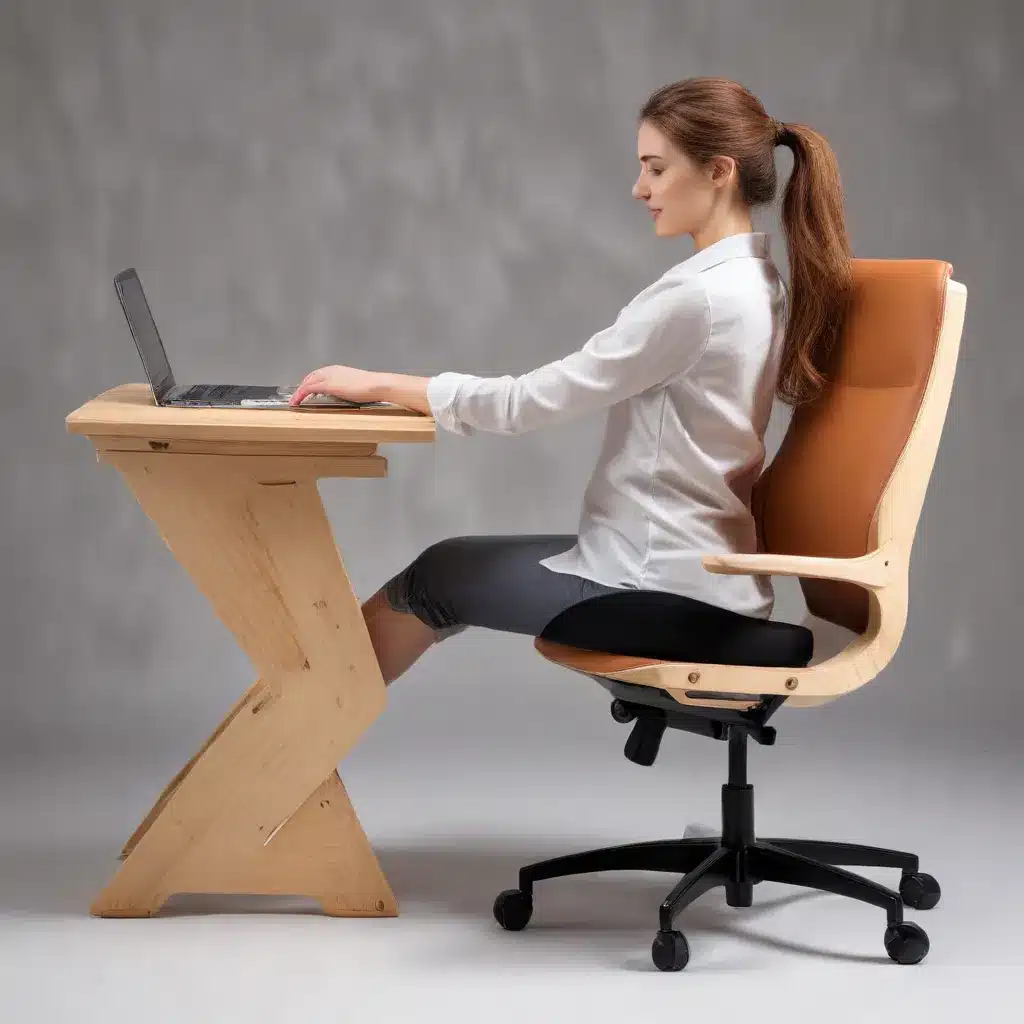
The Paramount Role of Ergonomics in Home and Office Spaces
In today’s fast-paced world, where productivity and well-being are paramount, the importance of ergonomic furniture design has become increasingly apparent. As a seasoned construction professional and interior designer, I’ve witnessed firsthand the profound impact that thoughtfully crafted furniture can have on the comfort, efficiency, and overall satisfaction of individuals in both home and office settings.
Redefining the Workspace: Enhancing Productivity through Ergonomic Design
The modern workspace has evolved beyond mere functionality; it is now a critical component in fostering employee well-being and maximizing productivity. Ergonomic principles, rooted in the science of human anatomy and physiology, have become the driving force behind the design of today’s most innovative office environments.
By carefully aligning the physical needs of workers with the layout and features of their workstations, ergonomic office design minimizes the risk of musculoskeletal disorders, eye strain, and other common ailments associated with prolonged desk work. Studies have consistently shown that employees working in ergonomically optimized spaces report fewer health issues, increased job satisfaction, and a notable boost in overall productivity.
The Cornerstone of Ergonomic Comfort: Ergonomic Chairs
At the heart of any successful ergonomic office setup is the chair. Ergonomic chairs are designed to provide comprehensive support, adjustability, and comfort, catering to the unique physical needs of each individual. Key features to look for include:
- Adjustable Seat Height: Allows the user to position their thighs parallel to the floor, promoting proper posture and reducing strain on the lower back.
- Seat Depth Adjustment: Ensures that the user’s back is properly supported, with a gap of 2-4 inches between the edge of the seat and the back of the knees.
- Backrest Angle Adjustment: Enables the user to maintain the natural “S” curve of the spine, reducing pressure on the lumbar region.
- Armrest Adjustability: Allows the user to position their arms at a 90-degree angle, minimizing strain on the shoulders and neck.
By incorporating these adjustable features, ergonomic chairs empower users to customize their seating experience, optimizing comfort and promoting long-term spinal health.
The Importance of Lumbar Support and Proper Desk Alignment
Alongside the chair, the desk and its positioning play a critical role in an ergonomic workspace. Proper desk height is essential, allowing the user’s arms to rest at a 90-degree angle while typing, reducing strain on the shoulders and neck. Adjustable desks, which can transition between sitting and standing positions, offer even greater flexibility and health benefits, encouraging movement and reducing the risks associated with prolonged sitting.
Equally important is the placement of the monitor, keyboard, and mouse. Ergonomic guidelines recommend positioning the monitor at eye level and an arm’s length away, minimizing neck strain and eye fatigue. Ergonomic keyboards and mice, designed to maintain a neutral wrist position, can further alleviate the risk of repetitive strain injuries.
By integrating these ergonomic principles into the design and layout of the workspace, employers and homeowners alike can create environments that prioritize comfort, productivity, and long-term well-being.
Customizing the Workspace: Accommodating Diverse Needs
Every individual has unique physical characteristics and preferences, requiring a customized approach to ergonomic design. Adjustable furniture and accessories, such as monitor arms, laptop stands, and document holders, allow users to fine-tune their workspace to their specific needs, promoting a sense of inclusivity and ensuring that all occupants can thrive in the environment.
Addressing space constraints and budget limitations is also a crucial consideration in ergonomic design. Compact, multi-functional furniture and budget-friendly ergonomic accessories can help transform even the smallest of spaces into comfortable and efficient workstations, without sacrificing the essential ergonomic principles.
Integrating Ergonomics and Aesthetics: Crafting Beautiful and Functional Spaces
Ergonomic design need not be at odds with aesthetic appeal. In fact, the marriage of form and function can result in truly exceptional spaces that not only promote well-being but also captivate the senses. By carefully selecting furniture and accessories that blend seamless ergonomic features with visually appealing designs, homeowners and businesses can create environments that are both comfortable and visually stimulating.
Whether it’s a cozy home office or a modern commercial workspace, the integration of ergonomic principles and thoughtful design can transform any space into a haven of productivity, relaxation, and inspiration.
Conclusion: Investing in Ergonomic Furniture for Long-Term Benefits
Investing in ergonomic furniture is not merely a fleeting trend; it is an investment in the long-term health, comfort, and overall well-being of occupants. By prioritizing ergonomic design in both home and office settings, individuals and organizations can reap the benefits of increased productivity, reduced absenteeism, and enhanced employee satisfaction.
As a construction professional and interior designer, I encourage you to explore the world of ergonomic furniture and incorporate these principles into your own spaces. By crafting environments that prioritize comfort, efficiency, and visual appeal, you can unlock the full potential of your home or workspace, empowering occupants to thrive and reach new heights of success.
To learn more about Local Builder London’s expert services in ergonomic office design and home renovation, please visit our website or contact us today. Together, let’s elevate the way we live and work, one ergonomic masterpiece at a time.
Key Takeaways
- Ergonomic furniture design is essential for enhancing productivity, comfort, and well-being in both home and office settings.
- Ergonomic chairs with adjustable features like seat height, depth, backrest, and armrests are the cornerstone of an ergonomic workspace.
- Proper desk height, monitor placement, and the use of ergonomic keyboards and mice are crucial for reducing strain and fatigue.
- Customizable furniture and accessories allow for personalized ergonomic solutions to accommodate diverse physical needs and space constraints.
- Integrating ergonomics and aesthetics can create visually appealing and functional spaces that promote productivity and inspiration.
- Investing in ergonomic furniture is a long-term strategy for improving employee health, increasing job satisfaction, and boosting overall efficiency.


